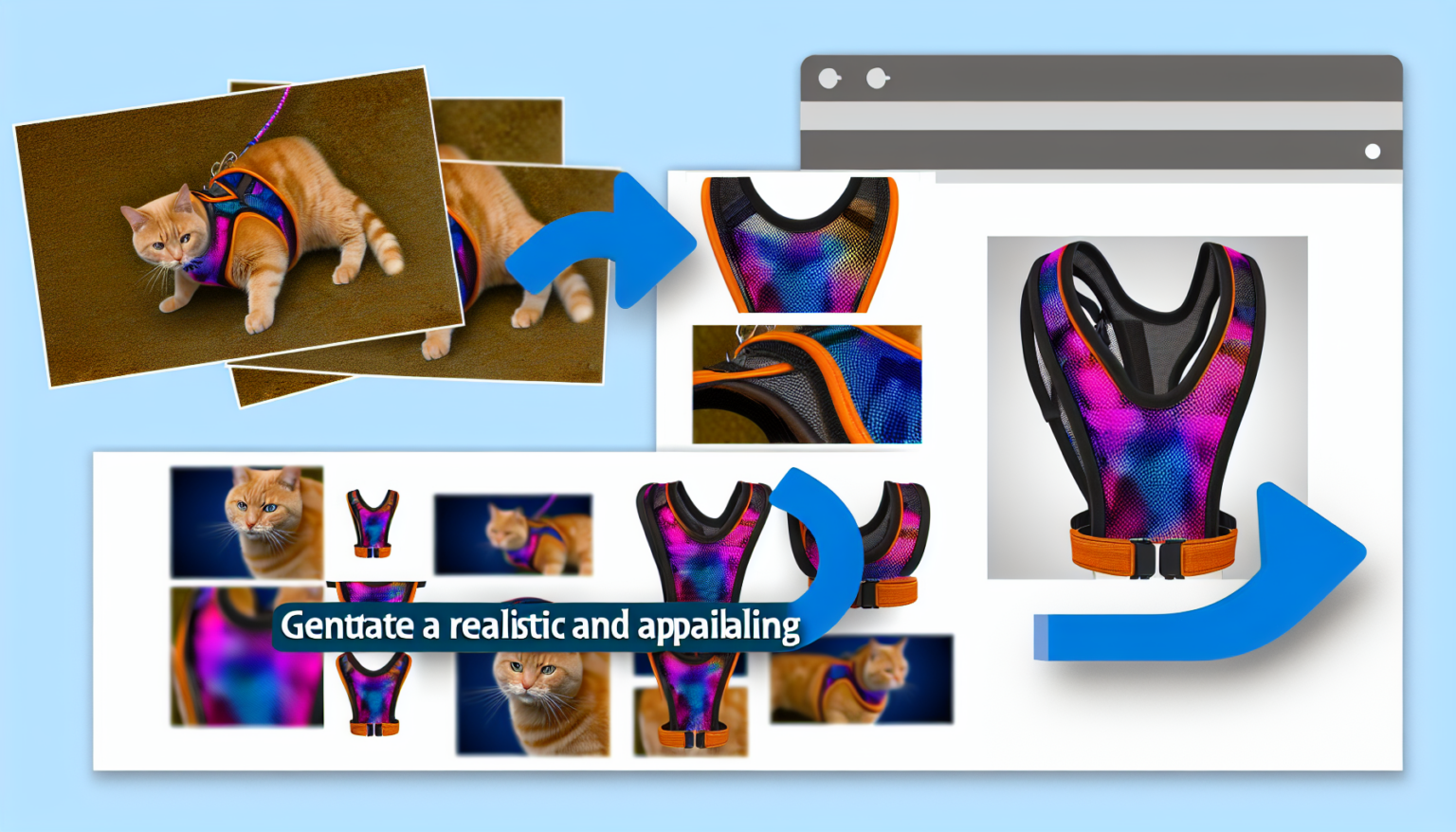Dreaming of gentle outdoor adventures with your whiskered queen? With the right fit and a calm plan, leash walks turn into curious, nose-to-the-wind strolls instead of panicked sprints. Here’s your 2024 guide to choosing the best cat harness, fitting it perfectly, and building your kitty’s confidence step by step.
- Why a cat harness is a smart choice in 2024
- Types of cat harnesses and who they suit
- How to measure and fit like a pro
- Training your cat to love the harness
- Features to look for in the best cat harness (2024)
- Common mistakes to avoid
- Outdoor etiquette and safety
- Quick step-by-step fitting checklist
- Final purrs
- FAQ
Why a cat harness is a smart choice in 2024
Harnesses protect delicate necks and give you safer control than a collar ever could. They spread pressure across the chest and shoulders, reducing the risk of injury if your kitty startles. Bonus: they’re perfect for gradual leash training at home, long before you set paw outside.
Surprising fact: a cat’s collarbone doesn’t attach to other bones, which helps them squeeze through tiny gaps. Translation? A secure, well-fitted harness matters more than you think.
Heading outside? Don’t forget seasonal protection. If you walk near grass or woods, read up on protecting your cat from ticks before your first adventure.
Types of cat harnesses and who they suit
- H-style harness: Two adjustable loops (neck and chest) connected by a strap. Lightweight and airy, great for cats who dislike bulk.
- Vest or mesh harness: Wraps the chest in a soft, breathable panel. Often the most “escape-resistant” and reassuring for nervous cats.
- Figure-8 harness: Minimalist and quick to put on, but can loosen if not sized precisely. Best for calm, experienced walkers.
- Step-in Y/V harness: Cat steps into two leg openings; pressure distributes over the sternum. Easy for guardians who prefer fewer head-over maneuvers.
Not sure which to pick? Start with a vest-style if your cat is wriggly or anxious, and an H-style if she hates anything bulky. Both should have smooth edges, soft webbing or mesh, and a sturdy back D-ring.
How to measure and fit like a pro
- Girth: Measure just behind the front legs, snug but not tight.
- Neck: Measure at the base, where a collar would sit.
- Fit test: One finger under the neck strap, two under the chest strap. No twisting, no pinching, no sliding.
Choose the size that places your cat in the middle of the adjustment range, not at the extreme. If between sizes, go up, then fine-tune the straps. Check fit again after a week—fur compresses and straps can settle.
Motivation matters. Use tiny, irresistible rewards and keep sessions short. For more ideas on tasty, healthy reinforcers, see our guide to feeding your cat.
Training your cat to love the harness
- Place the harness near favorite nap spots for two days. Reward curiosity with a treat.
- Touch your cat with the harness, then treat. Clip and unclip the buckles away from her body to desensitize to the sound.
- Put the harness on for 1–3 minutes at first. Treat, play, remove. Repeat daily, adding time slowly.
- Attach the leash indoors and let it trail for a minute under supervision. Then hold it loosely and follow your cat’s lead.
Original tip: Slide the harness under your cat’s dinner mat for a few meals. When delicious things happen around it, the harness becomes part of “home and comfort.”
When you’re ready for the big debut, bring a carrier as a mobile “safe room” and set a short, quiet route. Trim points can snag on soft blankets—keep them tidy with this gentle routine to trim your cat’s claws first.
Features to look for in the best cat harness (2024)
- Multiple adjustment points: Neck and girth, ideally with a sliding chest strap for a custom fit.
- Soft, breathable materials: Mesh or cushioned webbing to prevent rubbing behind elbows and armpits.
- Secure closures: Quick-release buckles plus strong Velcro on vest styles for double security.
- Reflective trim: Helpful at dusk and in shaded parks.
- Leash attachment: A sturdy back D-ring is standard; a front clip can help reduce pulling for bold explorers.
Prefer a snug, comforting feel? Go vest. Have a heat-sensitive kitty? Choose a lightweight H-style to keep her cool.
Common mistakes to avoid
- Skipping indoor prep: Heading outside too soon can create fear associations. Confidence first, sidewalks later.
- Harness too loose or too tight: Loose = escape risk; too tight = rubbing and resistance. Always use the finger test.
- Retractable leash outdoors: The sudden jerk and constant tension can spook cats. Use a 2–3 m lightweight, fixed-length leash instead.
- Clipping the leash to a collar: Collars are for ID only. Leash goes on the harness to protect the neck.
Error to avoid: Walking near busy roads on day one. Sudden noises can trigger panic, and a frightened cat may back out of poorly adjusted gear. Start in a quiet courtyard or garden.
Outdoor etiquette and safety
- Choose quiet times of day and avoid dog-heavy routes.
- Bring a towel to make an impromptu “base camp” if your cat needs a reset.
- Watch the tail: high and wavy = curious, low and tucked = time to head home.
For indoor days, offer vertical adventures and window views. A well-placed cat tree scratches that climbing itch while keeping confidence high for future walks.
Quick step-by-step fitting checklist
- Fit the neck strap first, then the chest.
- Check the chest strap sits behind the elbows—no rubbing when she walks.
- Attach the leash and do a gentle “wiggle test.” The harness should not slide over the shoulders when you apply light pressure.
- Reward, release, repeat later. Keep the last memory sweet.
Before grass time, pack treats, a small water bottle, and a soft cloth to wipe paws. If you walk in long grass or wooded paths, brush the coat afterward and re-check for hitchhiking bugs.
If your route includes greenery, stay proactive with seasonal care and read up on tick prevention for cats to keep explorations worry-free.
Final purrs
The best cat harness in 2024 isn’t one single model—it’s the one your cat accepts, that adjusts precisely, and that you can put on calmly every time. Choose soft materials, double-check the fit, and let your kitty set the pace. Slow and sweet always wins with felines.
FAQ
What is the most escape-resistant cat harness?
Vest or mesh styles are typically the most secure when properly sized, with both Velcro and buckles. Ensure two fingers fit under the chest strap and one under the neck. Recheck adjustment before every walk.
How tight should a cat harness be?
Use the finger test: one finger under the neck, two under the girth. The harness should not shift over the shoulders when you apply light leash pressure. No pinching, no gaps.
Can kittens wear harnesses, and from what age?
Yes—once fully vaccinated and comfortable being handled, many kittens accept harnesses around 12–16 weeks. Keep sessions tiny and treat-rich. Go slowly to build a lifelong love of walking.
Is a harness better than a collar for walking a cat?
Yes. A harness distributes pressure across the chest and shoulders, protecting the neck. Collars are best reserved for ID tags and breakaway safety at home.








